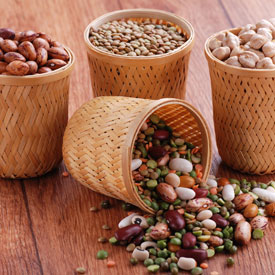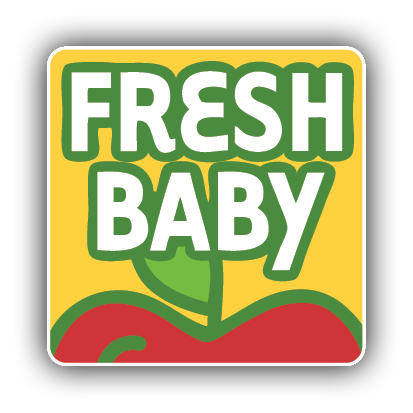
Legumes: An Affordable, Healthy & Versatile Food Choice
Beans and peas are members of the legume family. Varieties include kidney beans, pinto beans, black beans, lima beans, black-eyed peas, garbanzo beans (chickpeas), split peas and lentils. Soybeans and peanuts are also legumes. A plant that grows in an edible pod is a “Legume”.
Legumes are available in dry bulk packages and cans at grocery stores year-round. Dry packaged legumes are the least expensive way to go, but require more time to prepare. If you are on a tight schedule, cooked canned varieties save time in the kitchen. To remove excess salt drain canned legumes and rinse in water for at least one minute.
Legumes are a low cost, super healthy addition to meals. Considered one of the top super foods because of the nutrition benefits, legumes provide both protein and iron making them an excellent substitute for meat. They also contain fiber, folate, and potassium and make a great vegetable. Green peas, string beans, and green lima beans are considered vegetables only because they are not true legumes.
Beans and peas are unique because they can be consumed as either a serving of protein or a serving of vegetables. This depends of what other food you serve with them and the type of diet you enjoy. If you eat mostly vegetarian meals, beans and peas would be considered a protein source. If you include meat with your meals on a regular basis, beans and peas would be considered a vegetable source. For example, if you follow a 2000 calorie a day plan, your daily protein intake should include 5 ½ servings of protein. If you ate 2 ounces of turkey at lunch are planning on eating 3 ½ ounces of salmon at dinner, your side of beans would be a vegetable. If you did not have a serving of meat with lunch, your serving of beans at dinner would be a protein.
Legumes are a plant based protein and should be served with a whole grain, such as brown rice, to provide the amino acids needed to create a complete protein. Keep this in mind if you are using legumes as a main source of protein.
Legumes help lower the risk of heart disease, diabetes and certain cancers. They are also very hearty and give you a feeling of fullness, so you are less likely to overeat.
Popular legumes include:
- Black Beans– Sometimes called turtle beans; black beans have a mild, earthy flavor and soft texture. Black beans are commonly used in Latin and Southwestern soups, casseroles, stews, dips and sauces.
- Kidney & Red Beans – Kidney and red beans have a robust, full-bodied flavor and soft texture. They are often used in chili and salads, and can be paired with rice to make a complete meal.
- White Beans– White beans have a mild, delicate flavor and tend to absorb the flavors of other foods in recipes. White beans are great in casseroles, chili and baked beans.
- Garbanzo – Also known as chickpeas, garbanzo beans have a nutty taste and buttery texture. They are the main ingredient in hummus and are popular in Middle Eastern and Indian dishes.
- Lentils – Lentils have an earthy flavor and are used in soups and stews.
- Split Peas – The versatile pea has a sweet taste and many uses including soups, pot pies, salads and casseroles.
- Black-eyed Peas – Black-eyed peas are white with a black spot on them, which contributes to the name “Black-eyed”. They are great in soups, stews, and casseroles.
- Soybeans – Soybeans are used in everything from oil to milk. Their mild flavor is easily enhanced by adding seasonings. Edamame, which is a whole soybean that is steamed in the pod, is a tasty side dish or snack. Soybeans are also the main ingredient in tofu and soy milk.
- Lima Beans – Lima beans have a smooth and creamy texture and a sweet taste. Combine them with red peppers and corn to make succotash, or add them to soups and casseroles.
- Peanuts – In addition to the infamous peanut butter and jelly sandwich, raw peanuts taste good on their own and in Asian recipes.
Cooking with legumes: Here are some family-friendly recipes that include legumes in the ingredients:
- Baked Beans
- DanDan Noodles
- Better than Hummus
- White Bean Burritos
- Peanut Butter Cheese Toasts
- Black Bean Soup


